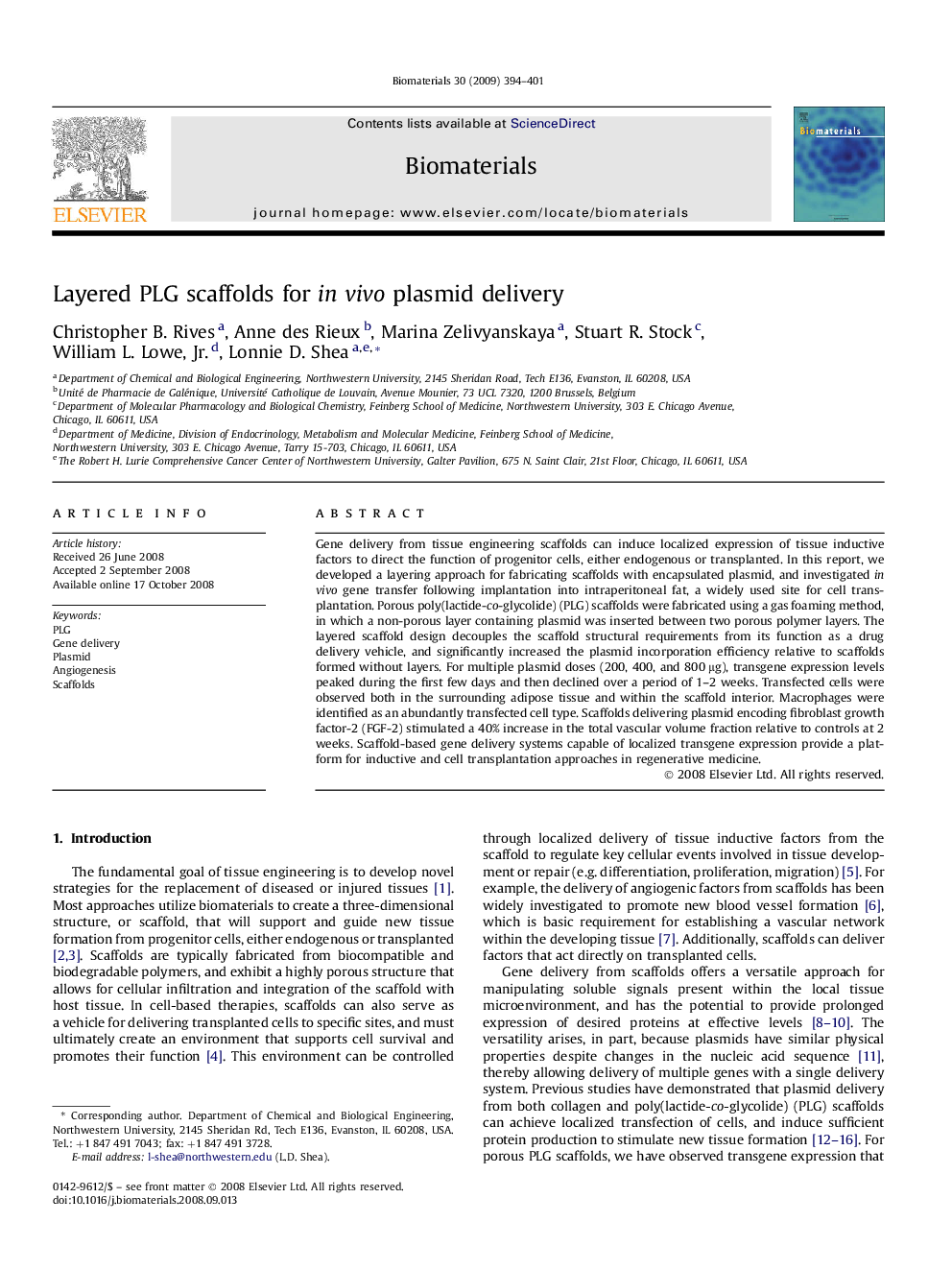| Article ID | Journal | Published Year | Pages | File Type |
|---|---|---|---|---|
| 10223 | Biomaterials | 2009 | 8 Pages |
Gene delivery from tissue engineering scaffolds can induce localized expression of tissue inductive factors to direct the function of progenitor cells, either endogenous or transplanted. In this report, we developed a layering approach for fabricating scaffolds with encapsulated plasmid, and investigated in vivo gene transfer following implantation into intraperitoneal fat, a widely used site for cell transplantation. Porous poly(lactide-co-glycolide) (PLG) scaffolds were fabricated using a gas foaming method, in which a non-porous layer containing plasmid was inserted between two porous polymer layers. The layered scaffold design decouples the scaffold structural requirements from its function as a drug delivery vehicle, and significantly increased the plasmid incorporation efficiency relative to scaffolds formed without layers. For multiple plasmid doses (200, 400, and 800 μg), transgene expression levels peaked during the first few days and then declined over a period of 1–2 weeks. Transfected cells were observed both in the surrounding adipose tissue and within the scaffold interior. Macrophages were identified as an abundantly transfected cell type. Scaffolds delivering plasmid encoding fibroblast growth factor-2 (FGF-2) stimulated a 40% increase in the total vascular volume fraction relative to controls at 2 weeks. Scaffold-based gene delivery systems capable of localized transgene expression provide a platform for inductive and cell transplantation approaches in regenerative medicine.
